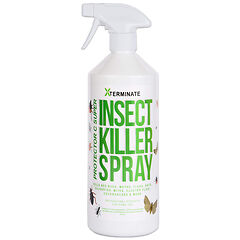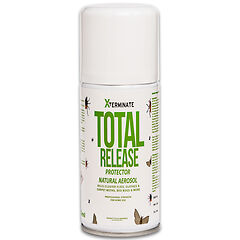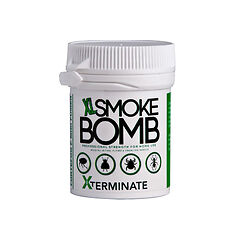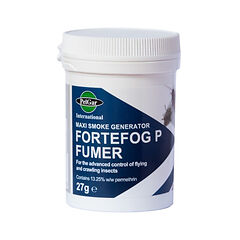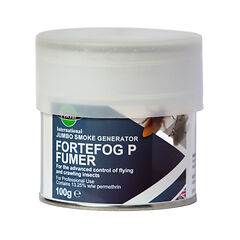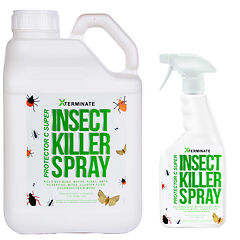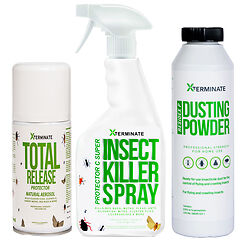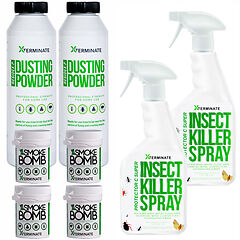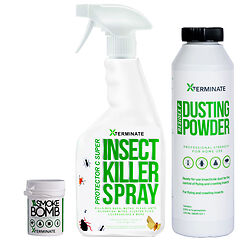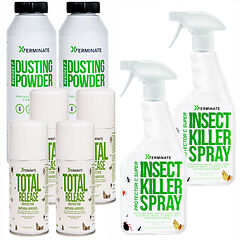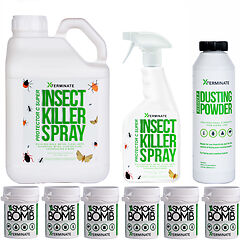Cockroach Killer
Cockroaches are one of the most notorious pests in the world. Their difficult reputation is well-earned, but it is possible to get rid of them with some professional pest control products and persistence!
Dos and Don’ts When Getting Rid of Cockroaches
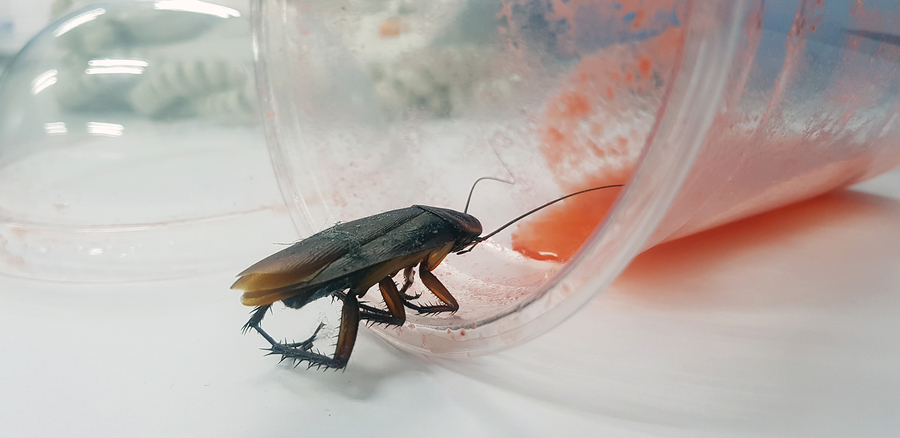 Cockroaches are as hard to get rid of as, well, cockroaches! They’ve been around for hundreds of millions of years, and for good reason – they’re extremely tough creatures! You may have heard that cockroaches are capable of surviving a nuclear war, and although this isn’t quite true, it does give you some idea of just how tough these little bugs are. They can regrow lost limbs and can even survive without a head, so it stands to reason that you’ll need some heavy-duty pest control supplies to get rid of them. Fortunately, we’ve got a range of professional-quality cockroach killing products and expert advice to help you out.
Cockroaches are as hard to get rid of as, well, cockroaches! They’ve been around for hundreds of millions of years, and for good reason – they’re extremely tough creatures! You may have heard that cockroaches are capable of surviving a nuclear war, and although this isn’t quite true, it does give you some idea of just how tough these little bugs are. They can regrow lost limbs and can even survive without a head, so it stands to reason that you’ll need some heavy-duty pest control supplies to get rid of them. Fortunately, we’ve got a range of professional-quality cockroach killing products and expert advice to help you out.
Health Risks of Cockroaches
Cockroaches have such a fearsome reputation for a reason. While they aren’t aggressive towards people and don’t bite like, say, bed bugs, they still pose a massive health risk. Their saliva, shed skin, and faeces can cause asthma attacks and other problems in those with breathing difficulties, while their love of filth means they’ll spread bacteria and disease wherever they go. What this means is that you need to get rid of cockroaches as soon as you possibly can! Luckily, all the products you see here are available on free next-day delivery to most parts of the UK so you can get them right away.
Getting Rid of Cockroaches – Dos and Don’ts
DON’T Squash Them
 If you spot a cockroach in your kitchen, your first instinct is probably going to be to squash it. This is a bad idea! For one, crushing them is difficult as they’re quick and great at hiding. More importantly, though, cockroach innards smell truly disgusting, and squashing them underfoot releases that smell into your room. This foul smell will turn your stomach, but it’s actually quite appetising to cockroaches – they’re cannibals that can sniff out the stench of their dead brethren. Crush one, and two or three more will come running in for an easy meal!
If you spot a cockroach in your kitchen, your first instinct is probably going to be to squash it. This is a bad idea! For one, crushing them is difficult as they’re quick and great at hiding. More importantly, though, cockroach innards smell truly disgusting, and squashing them underfoot releases that smell into your room. This foul smell will turn your stomach, but it’s actually quite appetising to cockroaches – they’re cannibals that can sniff out the stench of their dead brethren. Crush one, and two or three more will come running in for an easy meal!
DO Re-Treat the Area
Cockroaches can survive extreme radiation levels, freezing cold of up to -9°C, and decapitation. With this in mind, you can’t expect a single pest control treatment with one product to get rid of every single bug! You should do what the professionals do and use several professional-strength products multiple times over the course of a few days. This means the first treatment will wipe out most of the cockroaches, while the follow-up treatments mop up any survivors.
DON’T Leave Food Anywhere
Cockroaches love almost any kind of food, which is why they’re most common in kitchens and larders. If you know you have a cockroach problem, don’t make it worse by leaving food and food waste out in the open! Make sure drinks cans and tins are rinsed out and disposed of away from your property and wash any dirty dishes right away. Sugary food and drinks are the things cockroaches love the most, so be careful not to leave things like sweet wrappers, beer cans (beer is really sugary!), and rotting fruit lying around.
DO Use Several Different Products
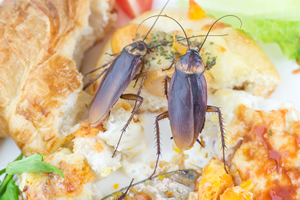 In addition to making sure you re-treat the area, you should also use several different products to make sure the pests have no escape. A smoke bomb is a powerful weapon in your arsenal – our fumers disperse a natural insecticide which remains effective in the air for around 3 hours. This is important to know as cockroaches can hold their breath for up to 40 minutes! The smoke penetrates deep into the cracks and crevices where cockroaches might be hiding, either killing them or driving them out onto other surfaces.
In addition to making sure you re-treat the area, you should also use several different products to make sure the pests have no escape. A smoke bomb is a powerful weapon in your arsenal – our fumers disperse a natural insecticide which remains effective in the air for around 3 hours. This is important to know as cockroaches can hold their breath for up to 40 minutes! The smoke penetrates deep into the cracks and crevices where cockroaches might be hiding, either killing them or driving them out onto other surfaces.
If you use a smoke bomb on its own, some roaches might escape onto other surfaces. However, if you cover the rest of your room in a cockroach-killing spray and dusting powder, you’ll give them no room to manoeuvre and stand a much better chance of wiping out the infestation.
DON’T Leave Gaps Uncovered
When dealing with cockroaches, it’s wise to remember how they get in and out of your house in the first place. Their small, flat bodies mean they can slip through the tiniest cracks in walls, floors, and skirting. You should try and make this as difficult as possible for them by sealing up these crevices as best you can. Go around every room thoroughly and plug any gaps you find, no matter how small. It could save you a lot of trouble in future!
DO Check Everywhere
When we say cockroaches can be anywhere, we really mean it – they’re commonly found behind fridges and cabinets, under washing machines, and even in drainpipes! Don’t forget about these places when checking for signs of an infestation – it only takes one egg-laying female to start an infestation all over again.
Early Warning Signs of a Cockroach Infestation
If you’ve treated your home or workplace for cockroaches – or if you’re not sure that you have them, but you want to be prepared – you should read these warning signs. If you happen to miss a couple of roaches during your treatment, they could help you spot and prevent a full-blown infestation from returning.
Eggs and Shed Skins
.jpg) Like most insects, cockroaches hatch from eggs and shed their skins as they grow into adults. You’ll probably find eggs and skins on or around any food source. The eggs (known as oothecae) can be stuck to walls, so make sure you check beneath shelves and on the back of any furniture.
Like most insects, cockroaches hatch from eggs and shed their skins as they grow into adults. You’ll probably find eggs and skins on or around any food source. The eggs (known as oothecae) can be stuck to walls, so make sure you check beneath shelves and on the back of any furniture.
Droppings
Cockroach droppings come in two varieties depending on how hydrated the roach is. If they don’t have access to much water, you’ll find small black or brown pellets everywhere. If they do, you’ll find brown smears. Make a note of how many pellets and smears you can see – this will clue you in on how many roaches there are.
Damage
While cockroaches are attracted to food waste, that’s not the only thing they eat – in fact, they’ll happily eat almost anything. Paper, cardboard, wood, plastering, rubber, curtains, carpets – you name it, a roach can chew it!
Smells
Cockroaches are attracted to unhygienic, smelly places. However, they also give off their own unmistakable scent, too! They give off a musty, stale odour that’s hard to describe but instantly recognisable. These smells are how cockroaches communicate, so the stronger the smell, the bigger the infestation is.
Cockroach Traps
 If you catch sight of the odd cockroach here and there, you might think it’s not a big deal and you can get by with a cheap can of aerosol. Unfortunately, there is rarely just one roach. In fact, seeing one should give you cause for concern as it likely means that all the potential hiding spots are already overcrowded. There’s no such thing as overkill when it comes to these pests, and a cockroach trap will help you prove this.
If you catch sight of the odd cockroach here and there, you might think it’s not a big deal and you can get by with a cheap can of aerosol. Unfortunately, there is rarely just one roach. In fact, seeing one should give you cause for concern as it likely means that all the potential hiding spots are already overcrowded. There’s no such thing as overkill when it comes to these pests, and a cockroach trap will help you prove this.
You can leave the trap out near the site of a suspected infestation and return to it after a few hours. Most are made up of a smelly bait and some sticky glue paper. When the bugs go for the bait, they get stuck to the glue and die. By checking how many bugs are caught in your trap, you can more accurately gauge the severity of your cockroach problem.
Flushing Agent
Flushing agents are a valuable tool when you’re searching for cockroaches (or any other pest, for that matter). If you think you have a pest problem and you want to confirm it with your own eyes, simply spray some flushing agent behind your furniture or in any crevice where bugs might be hiding. It contains a powerful insecticide with a delayed action that will drive any insects out into the open before it kills them. This will help you see for yourself how severe any potential infestations might be.
Species of Cockroaches
There are thousands of species of cockroach in the world. In the UK, you’ll likely only ever come across four of them.
German Cockroach
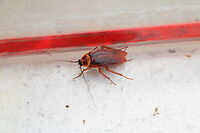 The UK’s most common species of roach, the German cockroach is light-coloured with two dark brown stripes on its head. They prefer damp conditions, so are commonly found in bathrooms and kitchens.
The UK’s most common species of roach, the German cockroach is light-coloured with two dark brown stripes on its head. They prefer damp conditions, so are commonly found in bathrooms and kitchens.
American Cockroach
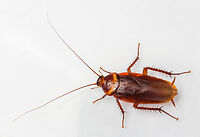 The largest of the UK’s cockroach species, the American variety can grow to around 30cm in length. They have a dark reddish-brown colour. You’ll likely find them in cellars around heating pipes as they like hot and humid conditions.
The largest of the UK’s cockroach species, the American variety can grow to around 30cm in length. They have a dark reddish-brown colour. You’ll likely find them in cellars around heating pipes as they like hot and humid conditions.
Oriental Cockroach
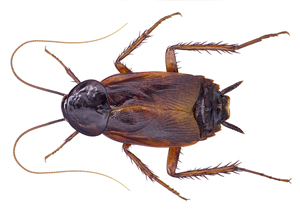 Oriental roaches are large and very dark brown or black. They usually live in sewers and can enter your home through the drains.
Oriental roaches are large and very dark brown or black. They usually live in sewers and can enter your home through the drains.
Brown-Banded Cockroach
As the name suggests, this species has distinct brown markings on its back. They’re very small and prefer drier conditions than the other species. You’re likely to find them in attics or under bedroom furniture.
Prevent Cockroaches from Coming Back
Cockroaches are attracted to dirt and grime, especially food waste. The cleaner your home is, the less likely you are to get roaches. Make sure you clean up any crumbs and spills in your kitchen and clean your floors regularly.
Another thing that attracts them is stagnant water, so you should make sure you don’t have any leaking pipes anywhere in the property. Regularly replace the water in pet bowls and make sure you don’t leave any wet towels or sponges lying around. All-around good hygiene goes a long way when dealing with these persistent pests.



